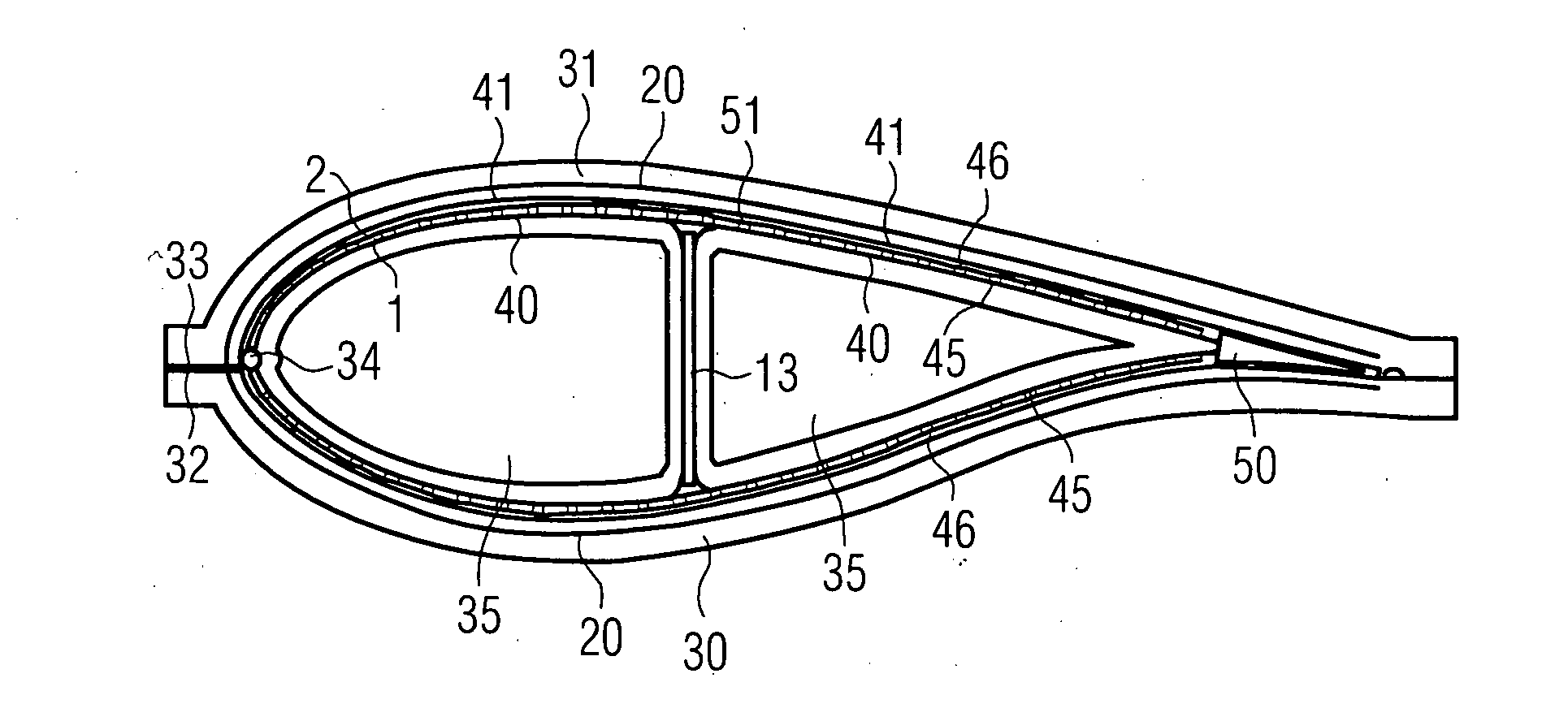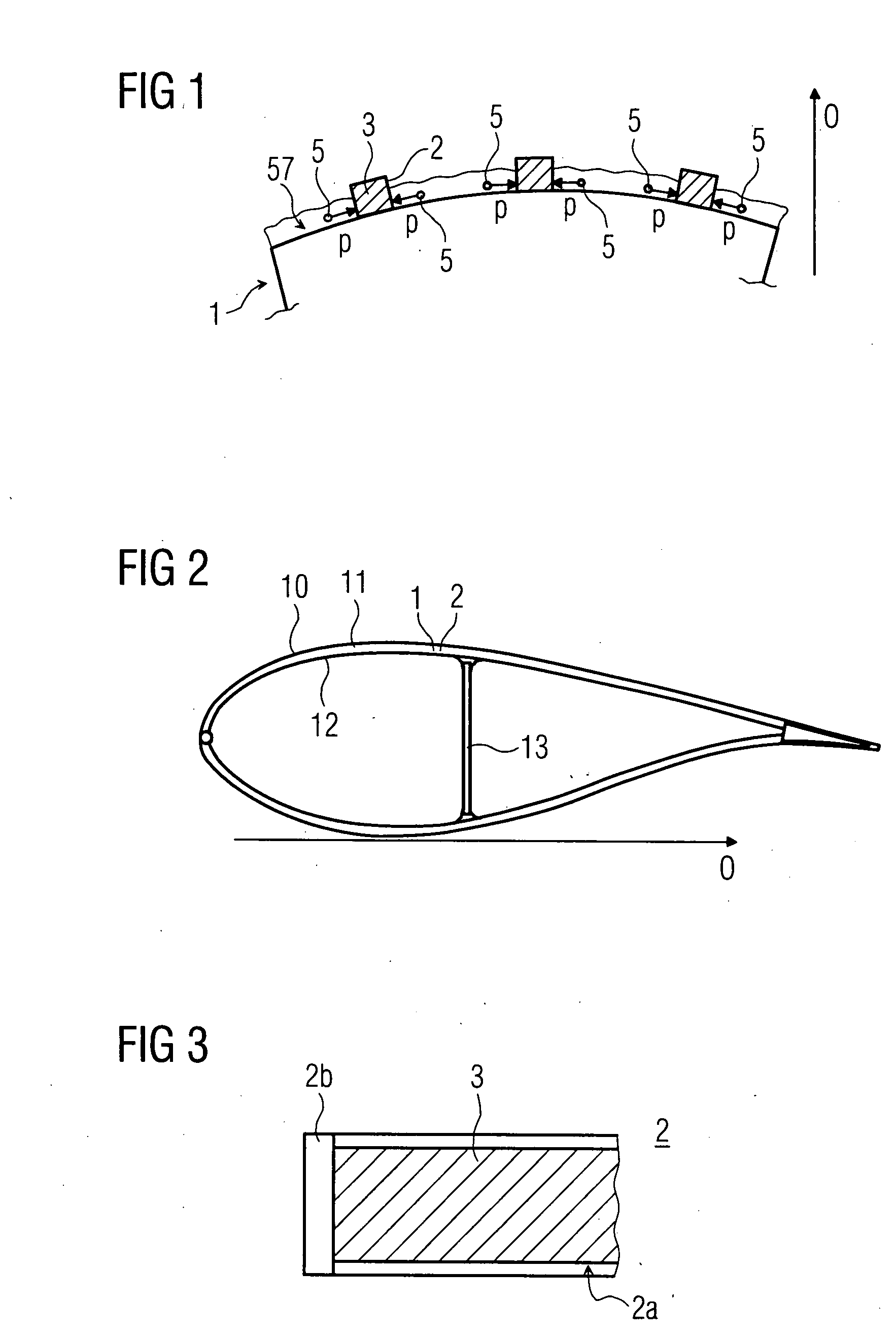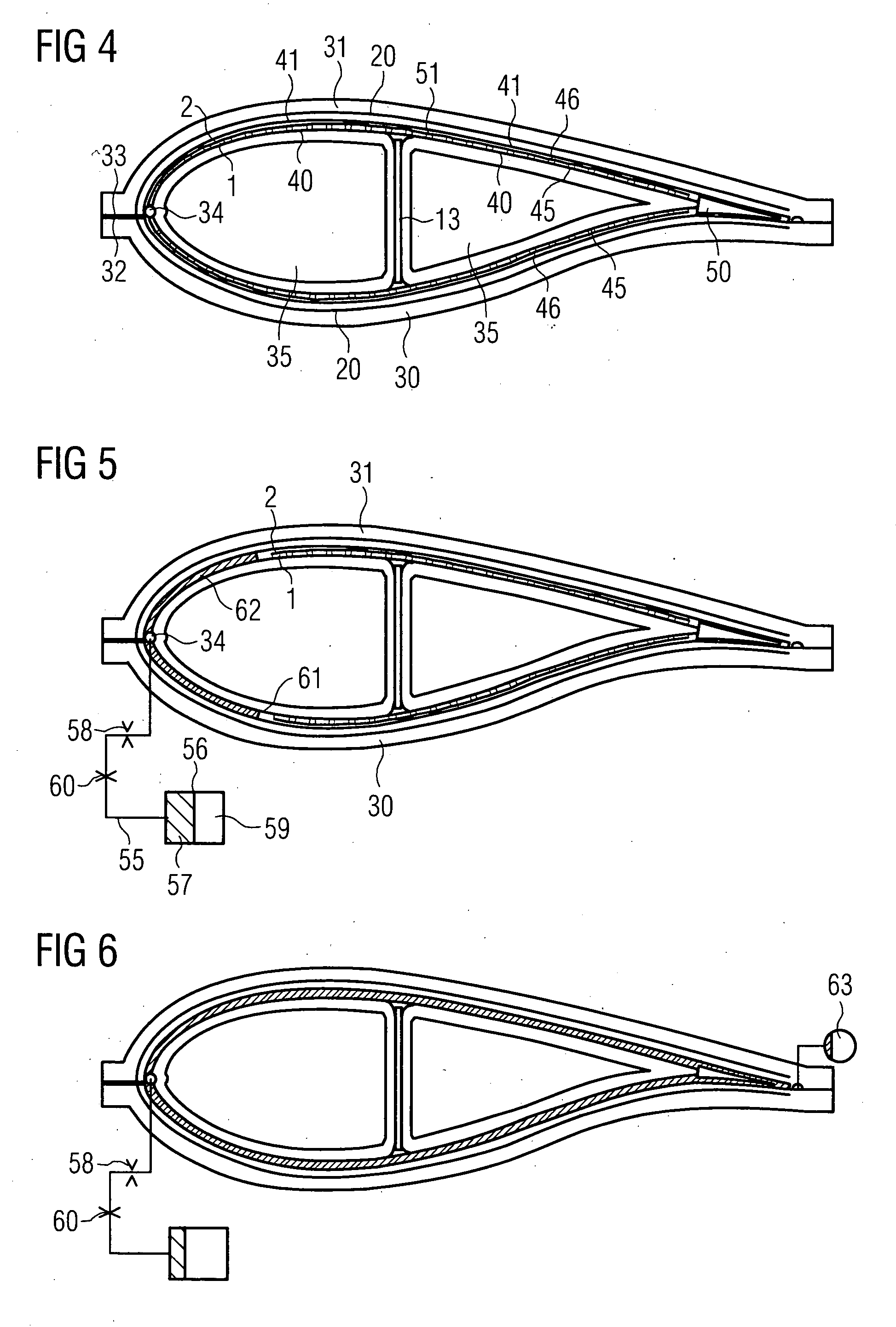Method for casting a component and a component comprising at least partly of fibre-reinforced plastic laminate
a technology of fibre reinforced plastics and casting methods, which is applied in the direction of machines/engines, other domestic objects, transportation and packaging, etc., can solve the problems of air trapped in the laminate, method failure, air trapped, etc., and achieve the effect of reducing or eliminating the risk of air inclusion
- Summary
- Abstract
- Description
- Claims
- Application Information
AI Technical Summary
Benefits of technology
Problems solved by technology
Method used
Image
Examples
Embodiment Construction
[0038]FIG. 1 shows schematically an embodiment of the fibre-reinforcement 1. Inside the fibre-reinforcement 1 several venting ducts 2 are laid up. The venting duct comprises a breather filter 3. During the casting process the fibre-reinforcement 1 is wetted by the plastic laminate 57. Now air inclusions 5 arise by for example, different curing of the plastic laminate 57. By the invention the air 5 passes, indicated in FIG. 1 with p, through the outer surface of the venting ducts 2. The air is now inside the venting duct 2 that is in the breather filter 3. As a result of the material of the venting ducts 2 only the air is allow to pass through. The plastic laminate 57 itself can not pass through. Therefore the air is leaded by the breather filter 3 inside the venting ducts 2 to the outside. This is shown by the arrow o. Hence, the air in the air inclusions 5 can discharge by the venting ducts 2. By this air inclusions are eliminated or reduced.
[0039]FIG. 3 shows schematically an embo...
PUM
| Property | Measurement | Unit |
|---|---|---|
| width | aaaaa | aaaaa |
| semi-permeable | aaaaa | aaaaa |
| wetting | aaaaa | aaaaa |
Abstract
Description
Claims
Application Information
 Login to View More
Login to View More - R&D
- Intellectual Property
- Life Sciences
- Materials
- Tech Scout
- Unparalleled Data Quality
- Higher Quality Content
- 60% Fewer Hallucinations
Browse by: Latest US Patents, China's latest patents, Technical Efficacy Thesaurus, Application Domain, Technology Topic, Popular Technical Reports.
© 2025 PatSnap. All rights reserved.Legal|Privacy policy|Modern Slavery Act Transparency Statement|Sitemap|About US| Contact US: help@patsnap.com



